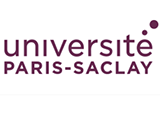Introduction
Paris-Saclay University is located in the Saclay Plateau in Paris, France, adjacent to the Paris Polytechnic Institute. It is a giant research university and a member of the French University of Excellence Program. It is known as the "beating heart of French science".
Overview
Student size: about 60,000 students, including 5,400 undergraduates, 23,300 postgraduates and 6,000 doctoral students.
Teachers: 10,500 scientific researchers.
History
Its origins can be traced back to the University of Paris, which was established in the second half of the 12th century AD.
In 1956, at the request of Joliot-Curie and his wife, part of the teaching activities of the Faculty of Science of the University of Paris were transferred to Orsay.
On March 1, 1965, the Orsay Center became independent and became the University of Paris XI in 1971.
In 2008, the project of the University of Saclay began, and with the approval of the French Ministry of Higher Education, many institutions confirmed their participation.
In 2011, the project won the French idex Award and is scheduled to be completed in January 2014. Founded on July 1, 2014.
In July 2014, several of its member schools were licensed to issue bachelor's, master's and doctoral certificates, and the school establishment decree was signed on December 29.
The first batch of students was welcomed in September 2015, and the reorganization and integration was completed on January 1, 2020.
Establishment time
Officially established on December 29, 2014.
School strength
Teaching quality: As a world-leading research university, it has rich teaching resources and provides a complete and diverse bachelor's, master's and doctoral degree programs. Its curriculum keeps up with the academic frontier and social needs, focusing on cultivating students' innovation and practical abilities. Graduates are highly recognized in academia, research institutions and the business community.
Scientific research level: The scientific research strength is extremely strong, with 275 laboratories shared with 7 research organizations in France, accounting for all of France's scientific research strength. 13%, and has produced many Fields Medal, Abel Prize, and Wolf Prize winners. Its scientific research results in science and engineering, life sciences and health, social sciences and humanities are at the world's leading level.
Institutional nature
Public research university.
Educational philosophy
Committed to cultivating outstanding talents with innovative spirit, critical thinking and international vision, promoting interdisciplinary research and academic cooperation, transforming scientific research results into practical applications, and contributing to social and economic development. The goal is to enter the top ten in the academic ranking of world universities and become the top university in continental Europe.
Key laboratories and disciplines
Key laboratories: It has many world-class laboratories, such as the Institute of Advanced Science, which conduct cutting-edge research in particle physics, nuclear physics, astrophysics, atomic physics, molecular physics, condensed matter physics, theoretical physics, electronics, nanoscience and nanotechnology.
Key disciplines:
Mathematics: It ranks first in the world in the 2022 Soft Science World Class Discipline Ranking and ranks 16th in the 2023 World University Discipline Ranking. It has produced 3 Fields Medals, 3 Abel Prizes, and 4 Wolf Prize winners.
Physics: It has always been the first in France in major lists and ranked 17th in the 2023 World University Subject Rankings.
Engineering Science: It covers multiple engineering fields such as electrical and electronic engineering. The related disciplines are ranked among the top in the world and have trained a large number of professionals for France's science and technology industry.
Life Sciences: Including biotechnology, biomedicine and other directions, it has achieved remarkable research results in oncology, pharmacology and toxicology, plant and animal sciences, and has made important contributions to the development of life sciences.
Faculty
The school consists of 5 colleges, 1 engineering school, 3 technical colleges and 1 undergraduate university college, including the School of Science, School of Medicine, School of Pharmacy, School of Law-Economics-Management, School of Sports Science, Saclay Normal School, Central Polytechnic-Higher School of Electricity, Paris Higher Agricultural Sciences, Institute of Optics, etc.
Ranking
Ranked 12th in the world and first in continental Europe in the 2024 Academic Ranking of World Universities by Soft Science.
Ranked 71st in the world in the 2024 QS World University Rankings.
Expense
Registration fees for French public universities are relatively low, generally around 200-400 euros for undergraduates, around 300-600 euros for masters, and around 400-800 euros for doctoral students, and will vary depending on the major and degree level.
Campus
Campus distribution: Saclay (Orsay-Gif), Versailles, Evry, Saint-Quentin - Yvelines and other campuses are located in the southern suburbs of Paris and surrounding areas.
Teaching facilities: The campus covers an area of 1,350 acres and is equipped with advanced teaching facilities and scientific research equipment, providing a good learning and research environment for students and researchers. At the same time, the Saclay area concentrates France's top scientific research institutions, elite universities and high-tech industrial enterprises, known as the "French Silicon Valley", providing students with abundant internship and employment opportunities.
-

University of Angers
-

University of Bordeaux
-
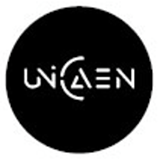
University of Caen Normandy
-
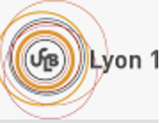
Claude Bernard University Lyon 1
-

CY Cergy Paris University
-

Clermont Auvergne University
-
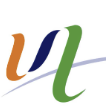
University of Artois
-
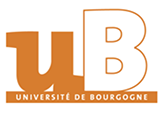
University of Burgundy
-

Jean Moulin University Lyon 3
-

University of Franche-Comté
-

Mesoamerican University
-

Istmo University
-

Mariano Galvez University of Guatemala
-

Regional University of Guatemala
-

Galileo University
-

Francisco Marroquín University
-

Rafael Landívar University
-

University of the Valley of Guatemala
-

University of San Carlos of Guatemala
-

Technological Institute of Tlaxcala Plateau
-

Golfo University
-

Technological University of South Sonora
-

Technological University of Huejotzingo
-

Tizimín Institute of Technology
-

Chilpancingo Institute of Technology

